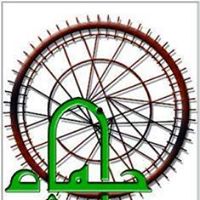اشترك بالحزمة الذهبية واحصل على وصول غير محدود شمرا أكاديميا
تسجيل مستخدم جديدBijective Projections on Parabolic Quotients of Affine Weyl Groups
289
0
0.0
(
0
)
اسأل ChatGPT حول البحث

ﻻ يوجد ملخص باللغة العربية
Affine Weyl groups and their parabolic quotients are used extensively as indexing sets for objects in combinatorics, representation theory, algebraic geometry, and number theory. Moreover, in the classical Lie types we can conveniently realize the elements of these quotients via intuitive geometric and combinatorial models such as abaci, alcoves, coroot lattice points, core partitions, and bounded partitions. Berg, Jones, and Vazirani described a bijection between n-cores with first part equal to k and (n-1)-cores with first part less than or equal to k, and they interpret this bijection in terms of these other combinatorial models for the quotient of the affine symmetric group by the finite symmetric group. In this paper we discuss how to generalize the bijection of Berg-Jones-Vazirani to parabolic quotients of affine Weyl groups in type C. We develop techniques using the associated affine hyperplane arrangement to interpret this bijection geometrically as a projection of alcoves onto the hyperplane containing their coroot lattice points. We are thereby able to analyze this bijective projection in the language of various additional combinatorial models developed by Hanusa and Jones, such as abaci, core partitions, and canonical reduced expressions in the Coxeter group.
قيم البحث
اقرأ أيضاً
We study the generating polynomial of the flag major index with each one-dimensional character, called signed Mahonian polynomial, over the colored permutation group, the wreath product of a cyclic group with the symmetric group. Using the insertion
lemma of Han and Haglund-Loehr-Remmel and a signed extension established by Eu et al., we derive the signed Mahonian polynomial over the quotients of parabolic subgroups of the colored permutation group, for a variety of systems of coset representatives in terms of subsequence restrictions. This generalizes the related work over parabolic quotients of the symmetric group due to Caselli as well as to Eu et al. As a byproduct, we derive a product formula that generalizes Biagiolis result about the signed Mahonian on the even signed permutation groups.
We obtain an explicit combinatorial formula for certain parabolic Kostka-Shoji polynomials associated with the cyclic quiver, generalizing results of Shoji and of Liu and Shoji.
We construct a model of the affine nil-Hecke algebra as a subalgebra of the Nichols-Woronowicz algebra associated to a Yetter-Drinfeld module over the affine Weyl group. We also discuss the Peterson isomorphism between the homology of the affine Gras
smannian and the small quantum cohomology ring of the flag variety in terms of the braided differential calculus.
We give necessary and sufficient conditions for the controllability of a Schrodinger equation involving the sub-Laplacian of a nilmanifold obtained by taking the quotient of a group of Heisenberg type by one of its discrete sub-groups.This class of n
ilpotent Lie groups is a major example of stratified Lie groups of step 2. The sub-Laplacian involved in these Schrodinger equations is subelliptic, and, contrarily to what happens for the usual elliptic Schrodinger equation for example on flat tori or on negatively curved manifolds, there exists a minimal time of controllability. The main tools used in the proofs are (operator-valued) semi-classical measures constructed by use of representation theory and a notion of semi-classical wave packets that we introduce here in the context of groups of Heisenberg type.
سجل دخول لتتمكن من نشر تعليقات
التعليقات
جاري جلب التعليقات


سجل دخول لتتمكن من متابعة معايير البحث التي قمت باختيارها


